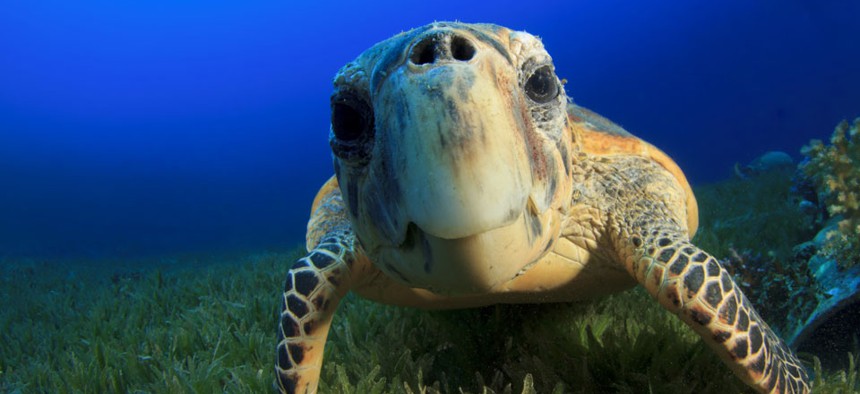Turtle Power: Sensors Give Hatchlings a Chance in Hatteras

Rich Carey/Shutterstock.com
Park Service backs local North Carolina project.
The National Park Service is hoping remote sensors will allow it to protect sea turtle hatchlings while keeping the beach open a little more often on Hatteras Island, North Carolina.
Currently, when officials spot a nest, they close off a 10-meter-by-10-meter area around it for the first 50 days of incubation.
“We go out there every single morning, starting May 1 through at least Sept. 15, patrolling 67 miles of shoreline for turtle nests,” said Britta Muiznieks, an NPS research coordinator and wildlife biologist at Cape Hatteras National Seashore. They have found 110 nests so far this year, she said.
The cordoned-off areas don’t usually interrupt fishing operations, beachgoers or vehicles. But when the turtles are ready to hatch, the enclosure is extended all the way to the shoreline “to protect the emerging hatchlings on their trek to reach the water,” procurement documents said.
The trouble is the eggs may hatch right after 50 days or they may take another six weeks, and there’s no great way to predict it. Some nests aren’t viable in the first place, but local regulations prohibit park officials from checking on them regularly.
Sea turtle populations worldwide declined by as much as 95 percent in the last century, according to Nerds Without Borders, a group that helps develop the sensors and provides volunteer labor. Several species nest at Hatteras, but primarily loggerheads, which are considered endangered internationally and threatened in the United States.
Eggs in a single nest hatch simultaneously and generally at night, when the 100-150 hatchlings march to the sea. Sometimes, the hatchling tracks disappear in the sand after strong wind or rain, so officials monitoring the nests don’t know the turtles have hatched and keep the beach closed unnecessarily. The remote sensors the Park Service plans to procure will ensure officials monitoring the nests know when the creatures have hatched -- and when they can open the beach again.
The devices measure temperature and motion inside the nests, regularly sending data over the Internet using mobile-phone technology. The technology is still experimental.
“We hope that we will soon understand how to use the data to accurately predict when hatchlings will emerge from the nest,” said Hatteras Island Ocean Center, the organization selling the sensors the government intends to buy.
The center's founder, Eric Kaplan, formerly a CEO of an electronics company, said he was not aware of sea turtle research using similar devices.
The Park Service tried a handful of the sensors last year, but they weren’t as sophisticated as they are now, and they were acquired too late in the season to provide helpful data, Muiznieks said. Knowing when the turtles will hatch would not only help keep the beach open more but also would allow park officials to alert interested tourists when they have a good chance of seeing the hatchling migration to the sea.
“This is a great place for ecotourism, and my organization is focused on trying to use ecotourism to better the economic conditions here,” Kalpan said. “The beach closures have a very negative impact on the local economy.”
(Image via Rich Carey/Shutterstock.com)






